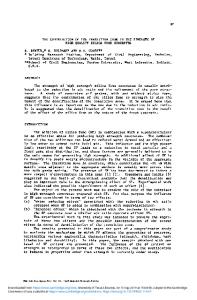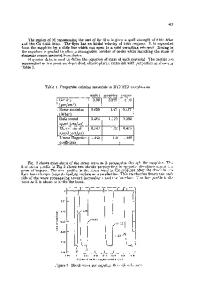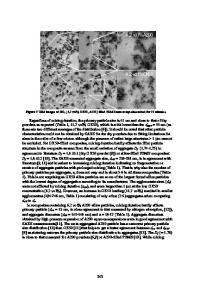Silica Fume, Bond Strength, and the Compressive Strength of Mortar
- PDF / 398,022 Bytes
- 6 Pages / 420.48 x 639 pts Page_size
- 66 Downloads / 425 Views
SILICA FUME,
BOND STRENGTH,
AND THE COMPRESSIVE STRENGTH OF MORTAR
DAVID DARWIN, SHEN ZHENJIA*, AND SHRADDHAKAR HARSH Department of Civil Engineering, University of Kansas, Lawrence, KS 66045 *Visiting Scholar from the Shanghai Institute of Building Materials, China.
ABSTRACT The strength and strain-rate sensitivity of cement paste and mortar is studied as a function of water-cementitious material ratio (W/C) and silica fume content. W/C's of 0.30 and 0.35 are used for materials without silica fume, while W/C's ranging from 0.336 to 0.436 are used for material containThe volume fractions of cement paste matrix and sand are ing silica fume. Strain rates of held at 63 and 37 percent, respectively, for all mortars. 30, 3000, and 300,000 microstrain per second are used. The results indicate that materials with silica fume are less strain-rate sensitive of than The replacement of cement by silica fume materials without silica fume. appears to (1) reduce rather than increase the bond strength between cement paste and sand and (2) increase the compressive strength of mortar primarily by increasing the strength of the cement paste matrix. INTRODUCTION It is now well established that the use of silica fume as a partial replacement for cement provides a significant increase in the strength of concrete. A portion of that strength appears to be the result of an increase in homogeneity and a decrease in the number of large pores in the hydrated material [1,2]. There is also evidence, much of it indirect, indicating that a portion of the strength increase due to the addition of silica fume is the result of an increase in bond strength between the hydrated cement paste and aggregate [3]. In fact, some feel that the enhancement in concrete strength obtained by the addition of condensed silica fume is largely due to the improvement of the bonding between the hydration products and the aggregate [4]. Current research at the University of Kansas has been aimed at determining the strain-rate sensitivity of the cement paste and mortar constituents of concrete. This paper covers a portion of that study which includes the use of cement paste and mortar in which a portion of the cement has been replaced by condensed silica fume. A comparison of the behavior of cement paste and mortar with and without silica fume helps cast light on the effect of silica fume on strength, stiffness, and strain rate sensitivity. The research helps answer questions such as: What mechanisms cause the increase in compressive strength of mortar and concrete when silica fume is added to cement? And, how does silica fume affect the compressive strainrate sensitivity of cement paste and mortar? BACKGROUND The role of the cement paste-aggregate interface on the behavior of Some exmortar and concrete has been under study for a number of years. perimental work [5, 6] seems to indicate that the interface plays a major role. These studies, however, used relatively thick, soft coatings on the aggregate to reduce bond strength, essentially isolating the aggregate from
Data Loading...











